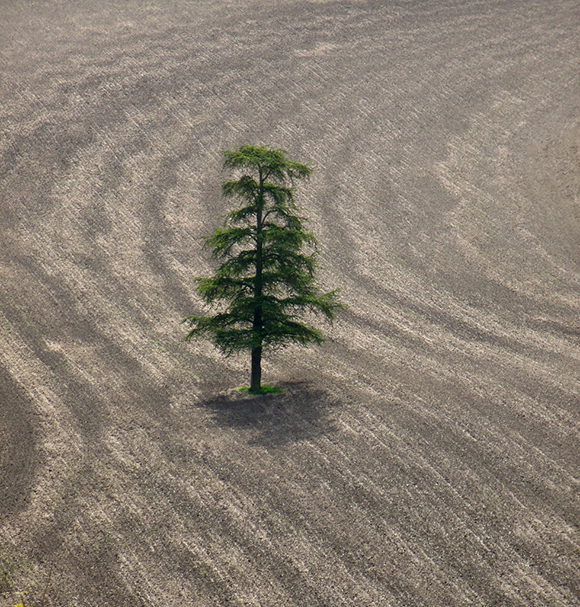Atmospher Sci & Global Chg
Research Highlights
January 2014
Understanding Carbon's Past and Future
Quantifying the human influence on the carbon cycle

Cutting down forests for cropland or pasture has an impact on climate. Understanding the amount of carbon stored in forests and croplands before modern-day agricultural practices took hold is important to quantify the impacts of past carbon emissions and to better grasp future changes. Enlarge Image. Image courtesy :Duncan, ©2007 Creative Commons license.
Results: Burning fossil fuels grabs the spotlight for liberating carbon dioxide into the atmosphere. But cutting and converting forests to cropland and pasture commands second place and the magnitude of these changes are not well known. A new analysis by scientists at Pacific Northwest National Laboratory shows that estimates of past carbon releases are directly related to the amount of carbon assumed to be stored in forests and soils before large-scale human land-clearing. In addition, their analysis included a new data-based estimate of past crop productivity.
"Incorporating estimates of the much lower crop productivity in the past substantially increased historical emission estimates," said Dr. Steven J. Smith, a senior researcher at PNNL who works on the climate-human connection at the Joint Climate Change Research Institute (JGCRI) in Maryland. "In this analysis, we captured the impact of low crop productivity before the ‘green revolution' of the 20th century, when modern agricultural technologies dramatically boosted food production."
JGCRI is a partnership between PNNL and the University of Maryland.
Why It Matters: At the scientific level, there is a lot of computational energy invested in understanding our climate. A large range of possible answers about past emissions from land-use change directly translates into uncertainty of how land ecosystems will respond to future changes in land-use, climate and carbon dioxide concentrations. It's important to improve these estimates of past human influences on the atmosphere to better predict the future impacts.
Methods: This study used the G-Carbon model, which employs a set of simple carbon box models to represent carbon flows within and between ecosystems in 14 world regions. The model is driven by globally gridded data on historical and future land-use transitions as well as satellite data that show current vegetation cover.
The research in this paper found that differences in the terrestrial carbon content as derived from climate and ecosystem models translate directly into differences in modeled values for future carbon flows. They also found that models may produce inaccurate results when they do not include realistic estimates of past cropland productivity changes.
What's Next? The researchers have completed additional, more detailed work examining the role of carbon in cropland soils and the impact of specific assumptions for cropland management. Next, they will examine the impact of land-use assumptions on probabilistic estimates of carbon-cycle model parameters.
Acknowledgments
Sponsors: Primary support was provided by a National Aeronautics and Space Administration (NASA) grant. Additional support came from the Global Change Technology Program (GTSP).
Research Team: Steven J. Smith and Andrew J. Rothwell of PNNL
Research Area: Climate & Earth Systems Science
Reference: Smith SJ, and AJ Rothwell. 2013. "Carbon Density and Anthropogenic Land-use Influences on Net Land-use Change Emissions." Biogeosciences 10:6323-6337. DOI:10.5194/bg-10-6323-2013
